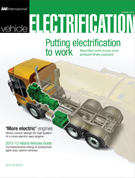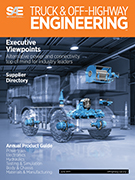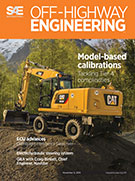Magazine

Tech Briefs: April 2018
2018-04-01
Laser Detecting Systems Enhancing Survivability and Lethality on the Battlefield Designing With Plastics for Military Equipment Engine Air-Brakes Paving the Way to Quieter Aircraft Nett Warrior Enhancing Battlefield Connectivity and Communications XPONENTIAL 2018 - An AUVSI Experience Communications in Space: A Deep Subject First Air-Worthy Metal-Printed RF Filter Ready for Takeoff Validation of Automated Prediction of Blood Product Needs Algorithm Processing Continuous Non-Invasive Vital Signs Streams (ONPOINT4) Using a combination of non-invasive sensors, advanced algorithms, and instruments built for combat medics could reduce hemorrhaging and improve survival rates. Calculation of Weapon Platform Attitude and Cant Using Available Sensor Feedback Successful development of mobile weapon systems must incorporate operation on sloped terrain.



















